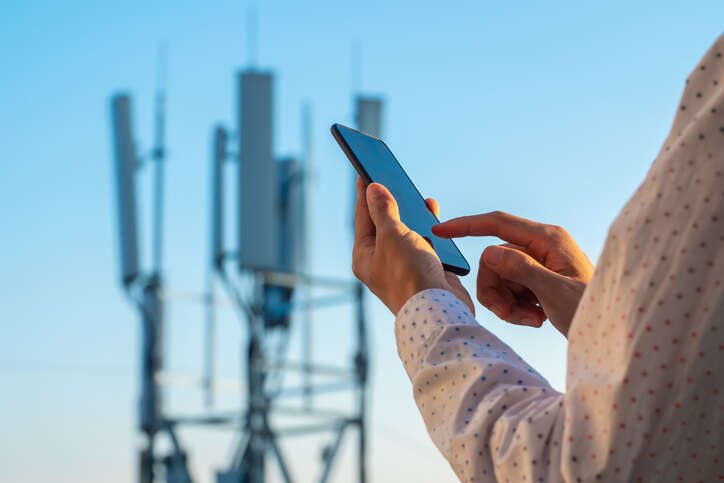
Earlier this year, a communications revolution seemed inevitable. Sales of 5G phones in the smartphone market were strong across Europe, North America and Asia – so much so that researchers had started focusing on what the next generation of mobile networking technology would look like.
Six months later and that revolution seems to have stalled. As inflation and supply chain constraints continue to disrupt the global economy, demand for 5G devices in Asia has declined markedly. It’s prompted concerns that Europe and North America might be next, as rising prices force customers to confront the reality that their current 4G-enabled device might be all they can afford in the coming year.
The sales figures for 5G devices in Asia are striking. In China, the world’s biggest smartphone market, sales plunged by 14.7% in the second quarter of 2022, with industry giants like Xiaomi, Vivo and Oppo reporting similar declines, according to a Bloomberg report published earlier this month. Meanwhile, market analysts have issued similar reports on the smartphone market in Southeast Asia, with smartphone shipments falling by 7% in the same period compared to the previous quarter. “Consumer confidence has been severely hit by growing inflation and vendors are struggling to keep devices affordable in price-sensitive markets,” wrote analysts from Canalys.
Whether these trends will be replicated in other regions, however, remains an open question. In Europe and the US, there is already a high 5G penetration rate compared to Southeast Asia, where 4G remains the main network of choice among consumers, explains Runar Bjørhovde, research analyst at Canalys. “If you look at the current state of the US market, around 80% of mobile devices sold in the last quarter came with 5G,” he says. “This figure is around more than 60% in Europe.”
Despite this, the popularity of 5G devices within the smartphone market is beginning to plateau, with sales of 4G phones starting to recover. Worldwide shipments for 5G devices hit a high of 180 million during the last quarter of 2021, but dropped to approximately 140 million in the second quarter of this year, according to Canalys research. “This is partly because we have had this supply shortage over the last year, where a lot of the semiconductor manufacturers are prioritising certain devices,” says Bjørhovde. “Now, the supply of 4G chips has increased again, which means that it’s way cheaper to produce lower-priced phones with 4G chips.” What’s more, he adds, the price of 5G devices is still a couple of years away from matching the cost of 4G smartphones.
The cost of living is splitting the smartphone market
As the cost-of-living crisis intensifies, this could mean the smartphone market splits between the ‘haves’ who can afford high-end devices and ‘have-nots’ who are more open to trying affordable brands. Companies like Apple seem to be aware of such dynamics happening, ramping up production of iPhones to exploit the widening gap in the market. Earlier this month, it was revealed that the company intends to produce 90 million such devices for the rest of the year, approximately the same number of phones built for the whole of 2021.
Even so, these pressures on the market may be temporary. While worldwide smartphone shipments have declined by 8.7% year-on-year in the second quarter of this year according to IDC, it predicts that the demand for new 5G smartphones will soon recover. “We continue to believe that any reduction today is not demand that is lost, but simply pushed forward,” said Nabila Popal, research director at IDC, in a recent statement.
Bjørhovde also agrees that the slowing demand for 5G devices is a short-term setback. “The rate of 5G growth isn’t really dropping that much,” he says. “We’re maybe talking about a couple of percentages before it gradually starts building up again and that’s mainly because the innovation of 5G chipsets will continue driving the price down and eventually become the de-facto option across all smartphones.”
Others like Ian Fogg, vice-president for analysis at Opensignal, believe that the improvement in service that 5G offers has already secured its long-term advantage in the marketplace. “The key thing is that 5G is such an improvement in experience that a consumer with a 5G device is probably going to have a great experience with it, and will be more likely to cut back on spending in other areas,” he says.
During periods of economic crisis, Fogg believes that when consumers prioritise where they spend their money during periods of economic downturn, keeping their mobile devices and smartphones tends to be a high priority. “If a consumer decides to go with a 5G phone that’s very capable, it could mean that they’re more likely to downgrade their home broadband or save money by getting rid of their home broadband entirely,” he says. “We have to look at the whole picture of how consumers choose to spend money on mobile devices during periods like this.”






